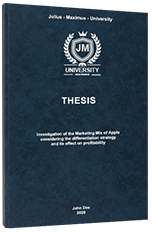
To the students out there, have you ever been ranked with other students or other schools? Did you understand the purpose behind the ranking and how they did it? If not, you are going to learn how ANOVA comes into play.
ANOVA - FAQ
- It allows the reader to track your sources so that they can do further research on a particular topic based on the references you have provided.
- Citing prevents your work from being termed plagiaristic. Plagiarism occurs when you quote from an author and not credit them for their words.
- It displays maturity on the researcher’s part since you acknowledge that you are not the custodian of all wisdom- other scholars have knowledge that you do not possess.
- It proves to the reader how through you were in writing your work since citing proves you did a lot of research.
Tip: If you are done with your academic work, we can help you with dissertation printing!
- Quoting in your work, the author’s words or writings will be written as they are without any alteration. After you quote the words, include the page number of the book where you obtained the quote from.
- Paraphrasing involves explaining the author’s words in a simplified way. Page numbers should also be indicated.
- Citing sources the entire book or document- this is a general method of citing since it does not go into detail like quoting and paraphrasing.
ANOVA test helps you determine which variable is the best out of all other variables. Scientists come up with a set of hypotheses, so it helps them settle on one suitable hypothesis or variable to explain or solve a phenomenon.
Anybody can use ANOVA for their research. It is not a test that is limited to scientists or statisticians. The purpose of ANOVA is to find the best possible approach out of hundreds of others to overcome a challenge. Also, ANOVA is used to identify a major problem from a list of problems so that people can prioritize solving a major problem rather than a minor one. For instance, teachers can use it to determine why students perform better than others while ranking them. They can hypothesize the reason based on factors like lack of books, laziness and so on. The teacher can pick on any of the variables and match that against their performance.
- The error variances of the variables are equal throughout the sample. In this instance, all variables will be assumed to have the same data.
- The dependent variable needs to be of metric measurement level; whether ratio or interval data. Interval data allows for data below zero, unlike ratio data where data never goes below zero.
- The dependant variable approximates a multivariate normal distribution. For instance, two-way ANOVA studies multiple variables hence the emergence of different graphs to explain each variable.
ANOVA: Definition
It is a statistical method of analysing variations affecting a certain phenomenon. There are many reasons why a phenomenon may occur. It thus seeks to identify a particular variable that is causing a phenomenon to occur.
What does ANOVA reveal?
It reveals whether there are any statistical differences between variables. There are many reasons why an event occurs however, you may only want to identify the variable that majorly causes a particular event. Once a particular variable is identified, analysts can further explain the variable.
There are many instances when it can be used, but we will focus on one example. A teacher may use it to determine why his/her students keep failing their examinations. A teacher will provide a list of hypotheses for the examination failures such as students lacking reading materials, the students’ laziness, or their method of instruction. The teacher will then experiment on the three hypotheses and rank them to determine which of the hypothesis best explains their failures.
One-Way ANOVA vs. Two-Way ANOVA
One-Way ANOVA uses one independent variable to explain an event. In this case, you do not even need to come up with multiple hypotheses. Your concern is mainly whether a particular variable affects a certain phenomenon. The Two-Way ANOVA method relies on two independent variables to explain an event. The method does not just focus on how each of the variables affects an event but also on the relationships between the two variables.
These two classifications of the statistical technique have some distinguishing features below:
| One-Way ANOVA | Two-Way ANOVA |
| It needs to confirm the relationship between two principles. | It needs to confirm the relationship among the three principles. |
| The number of group samples is at least three. | The number of group samples are multiple in each variable. |
| It relies on one independent variable. | It relies on two independent variables. |
| The observations here need not to be the same. | The observations in each variable need to be equal. |
| It is a hypothetical test that examines the impact of one variable on an event. | It is a hypothetical test that studies the impact of two variables on an event. |
- ✓ Free express delivery
- ✓ Individual embossing
- ✓ Selection of high-quality bindings
ANOVA – Examples
For you to solve a certain phenomenon, you may be wondering which statistical classification you should use. One example will be provided for each so that you can properly use the right ANOVA method to correct a phenomenon. In each ANOVA method, you will need to record your results preferably in a tabulated format.
In a Nutshell
Below are a few things to remember about it:
- It requires the analyst to come up with a hypothesis. After that, you will need to conduct experiments based on your hypothesis.
- It is a tool that can be used by anybody, you need not to be an expert.
- It can be used to analyse the impact of several variables on a phenomenon.
- It then guides the analyst to focus on one variable especially in instances where only one solution is needed to solve a problem.
- In the technique, your experiment may not tally with your hypothesis. Experiments not confirming your hypothesis are normal in ANOVA and other scientific experiments. Just like in sciences, you will need to come up with another hypothesis.

